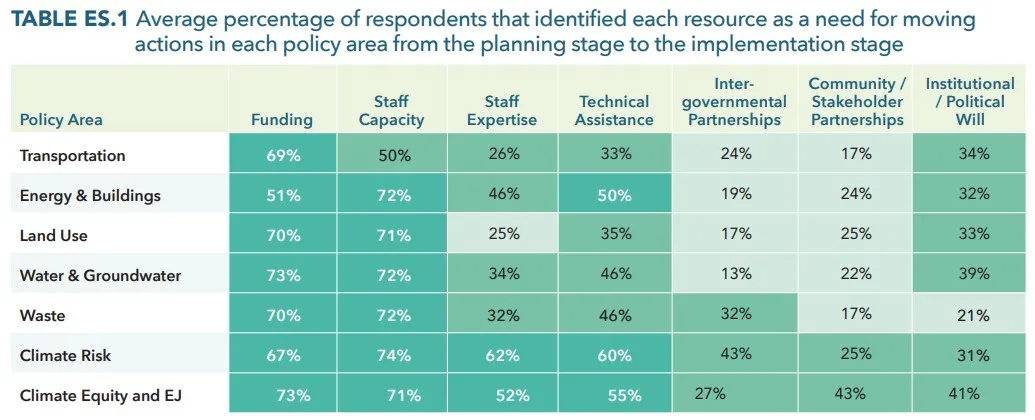Dive Brief:
- California local governments ranked funding and staff capacity as top needs to move climate policy from the planning to implementation phase, according to a report released today by the University of California Berkeley’s Center for Law, Energy and the Environment; the Institute for Local Government and nonprofit Next 10.
- This finding was “very surprising considering the historic and robust investments we’ve seen from both federal and state actors over the past couple of years,” said Hanna Payne, report co-author and climate policy research fellow at the Center for Law, Energy and the Environment. The finding underscores that local governments still need more technical assistance to access such funds, she said.
- However, Payne said, “It is not enough to have one-time support to complete an application to access grant funding if the jurisdiction doesn’t have the staff capacity to see that through. We need to fund full-time positions on climate.”
Dive Insight:
This isn’t the first time researchers have sounded the alarm that many localities don’t have the staff capacity, resources or technical expertise to take advantage of new climate funding opportunities.
Federal agencies are not deaf to these concerns, offering technical assistance through many grant programs. Last month, the Federal Emergency Management Agency made key changes to two of its most significant climate resilience grant programs in an effort to lower the financial and administrative burden on certain applicants.
The report released today is based on a survey designed to assess the current status of climate action planning and policy in California localities, and to identify opportunities and barriers for climate action. Over one-third of California cities and counties responded to the survey, but rural, small and less wealthy municipalities are underrepresented among respondents, the researchers noted.

The researchers hope their findings lead to greater collaboration between local, state and federal governments to improve localities’ ability to navigate the funding landscape, Payne said. “That collaboration can come in the form of interagency partnerships or multi-jurisdictional partnerships to help facilitate knowledge-sharing between jurisdictions that have similar priorities, similar needs, [or] similar challenges,” she said.
Also, more funding programs are needed to give local governments long-term staffing capacity, Payne said. She added, “We need to be designing funding programs that are quick and accessible for jurisdictions to engage with.”
Other takeaways from the report include that local climate action is driven by priorities set at the California state level through funding and regulation, and that most climate action plans and related planning documents lack funding strategies for the often expensive-to-implement tactics within. Plus, the report finds that public service programs that place fellows in local government, such as AmeriCorps, can be pivotal in a jurisdiction’s ability to be proactive on climate issues.
Researchers also noted that localities could increase their climate impact by addressing methane emissions from the waste sector — a finding that echoes growing calls from advocates and leaders across the country.












